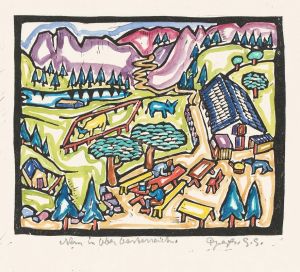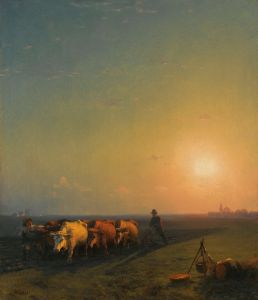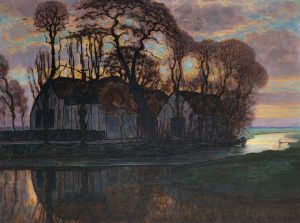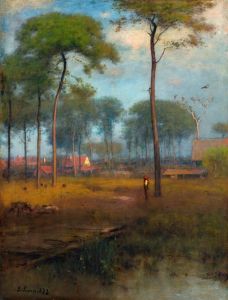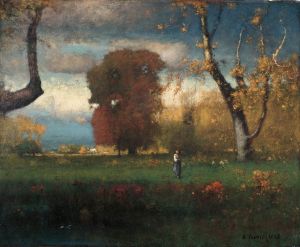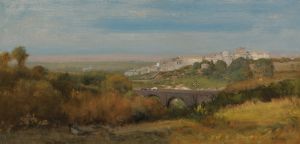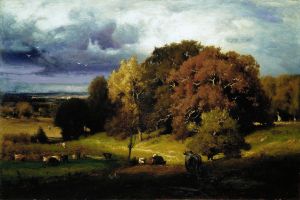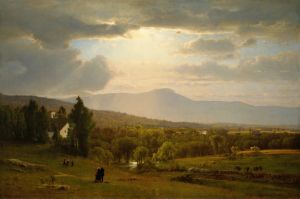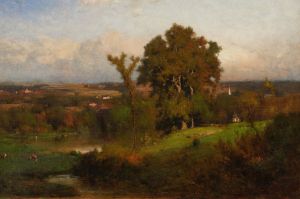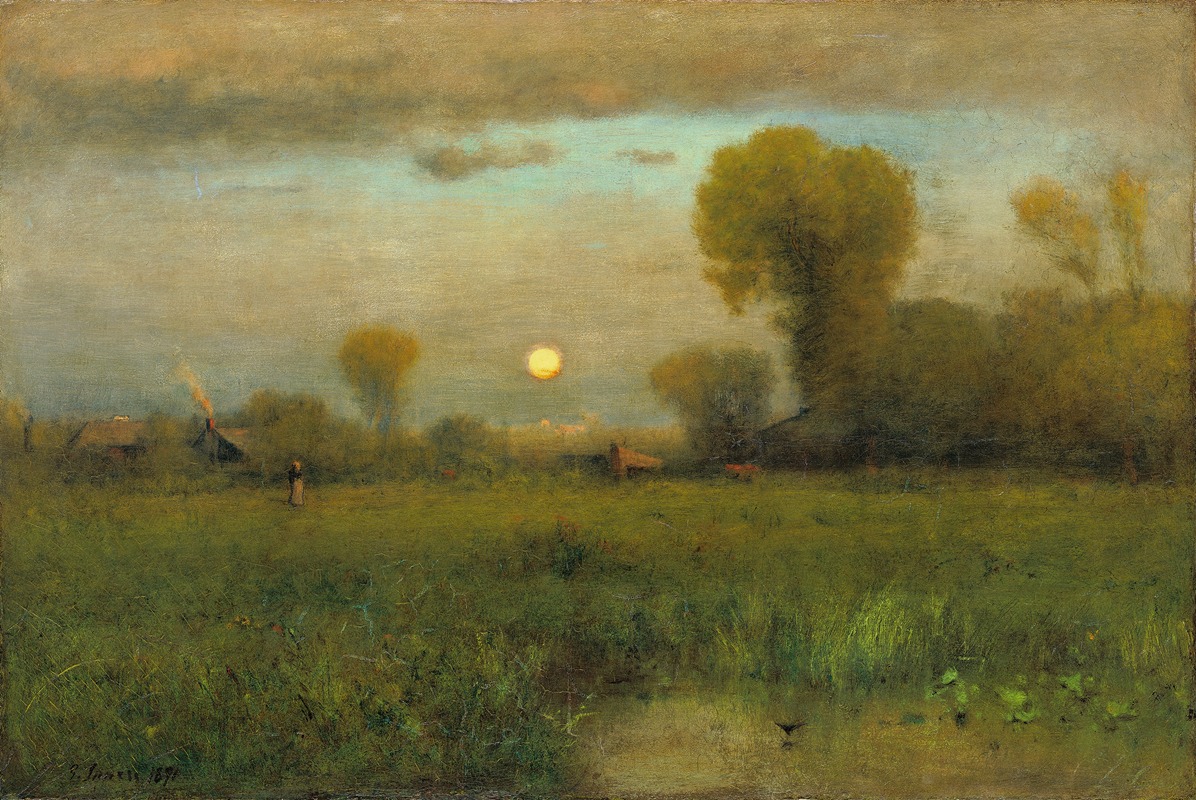
Harvest Moon
A hand-painted replica of George Inness’s masterpiece Harvest Moon, meticulously crafted by professional artists to capture the true essence of the original. Each piece is created with museum-quality canvas and rare mineral pigments, carefully painted by experienced artists with delicate brushstrokes and rich, layered colors to perfectly recreate the texture of the original artwork. Unlike machine-printed reproductions, this hand-painted version brings the painting to life, infused with the artist’s emotions and skill in every stroke. Whether for personal collection or home decoration, it instantly elevates the artistic atmosphere of any space.
George Inness was an influential American landscape painter, born on May 1, 1825, in Newburgh, New York. He is often associated with the Hudson River School, although his style evolved significantly over his career, eventually aligning more closely with the Tonalist movement. Inness is celebrated for his ability to convey mood and atmosphere in his landscapes, often drawing inspiration from the natural world and the spiritual philosophies of his time.
"Harvest Moon" is one of Inness's notable works, painted in 1891. This painting exemplifies his mature style, characterized by a softer, more diffused approach to landscape painting. Inness's work during this period often reflects his interest in the spiritual and the transcendental, influenced by the writings of Emanuel Swedenborg, a Swedish theologian whose ideas about the connection between the spiritual and natural worlds resonated with Inness.
The painting "Harvest Moon" captures a serene rural scene under the glow of a full moon. Inness's use of color and light in this work is particularly noteworthy. He employs a palette of muted earth tones, with gentle contrasts between the darkened landscape and the luminous sky. The moonlight bathes the scene in a soft, ethereal glow, creating a sense of tranquility and introspection. This atmospheric quality is a hallmark of Inness's later work, where he sought to evoke emotion and contemplation rather than depict precise details.
Inness's technique in "Harvest Moon" involves loose brushwork and a focus on the overall impression of the scene rather than minute details. This approach aligns with the Tonalist movement, which emphasized mood and shadow over the crisp realism of earlier landscape painting. By using subtle gradations of tone and color, Inness creates a harmonious composition that invites viewers to experience the landscape on an emotional level.
Throughout his career, Inness was deeply interested in the interplay between the natural world and human perception. He believed that art should not merely replicate the visible world but should also capture the unseen, spiritual essence of nature. "Harvest Moon" embodies this philosophy, as it transcends mere representation to evoke a sense of the mystical and the sublime.
George Inness passed away on August 3, 1894, in Bridge of Allan, Scotland, leaving behind a legacy of innovation in American landscape painting. His work, including "Harvest Moon," continues to be celebrated for its emotional depth and its ability to convey the profound beauty of the natural world. Inness's paintings are held in numerous prestigious collections, including the Metropolitan Museum of Art in New York and the National Gallery of Art in Washington, D.C.
"Harvest Moon" remains a testament to Inness's skill as a painter and his philosophical approach to art. It invites viewers to reflect on the beauty and mystery of the natural world, encouraging a deeper appreciation for the landscapes that surround us. Through his masterful use of light, color, and composition, Inness captures the quiet majesty of a moonlit night, offering a glimpse into the spiritual dimension of nature.





